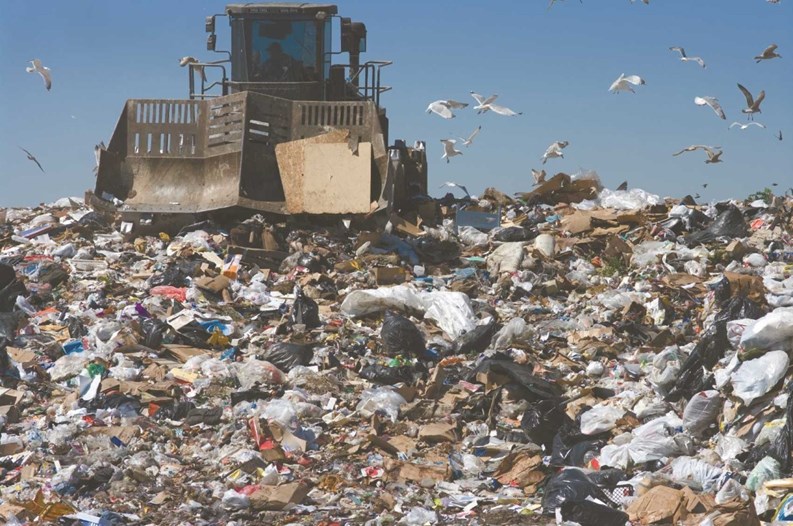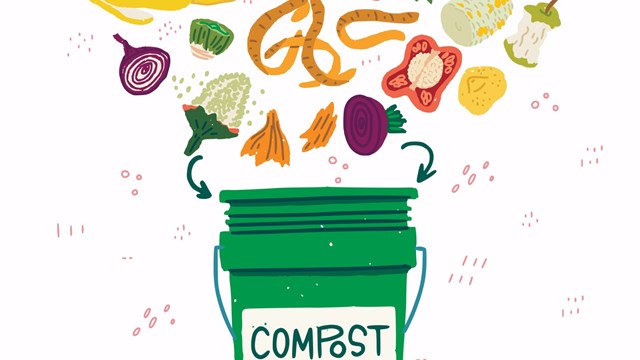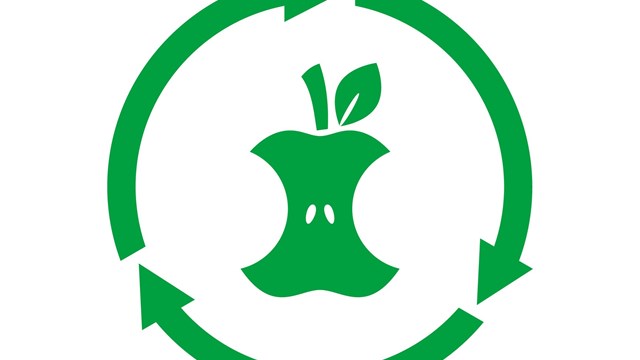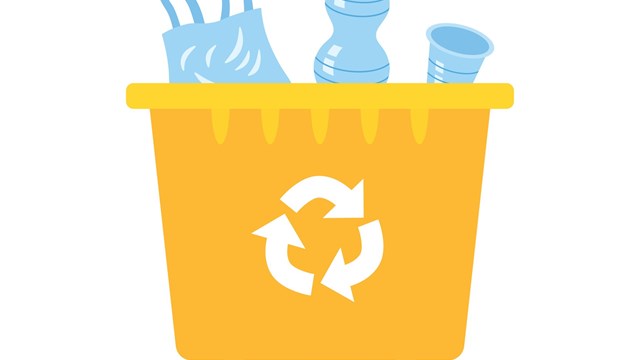Twice a week whether it is on Tuesday and Thursday or Monday and Friday, in every neighborhood throughout the city, you can hear it. Usually before first light you are roused from a sound sleep by the rumbling, beeping and crushing sounds of the garbage truck sent to retrieve your block’s mountains of sorted trash.
But as the sounds of the truck finally fade in the distance awakening another area of the city that never sleeps, not too many of us think about where all that garbage goes. According to information provided by Kathy Dawkins, a spokesperson for the Department of Sanitation of New York (DSNY), the department collects more than 12,500 tons of refuse and 1,760 tons of recyclables a day.
And it is no small operation. The DSNY has more than 7,100 uniformed workers and supervisors, 2,048 civilian employees, 2,505 collection trucks, 450 street sweepers, 298 front-end loaders, and 365 salt/sand spreaders in its fleet of vehicles.
And that doesn’t even take into account the city’s private carters. According to Nancy Walby, co-chair of the Brooklyn Solid Waste Advisory Board (SWAB), while the city provides garbage pickup for residences, multifamily buildings can supplement that with private carting services if they feel they need it.
So how does that estimated 12,500 tons of bagged refuse and recycling ultimately get to its final destination?
A Little History
Garbage collection in New York City has had an interesting history. According to Elizabeth Royte, author of the book Garbage Land: On the Secret Trail of Trash, up until the 1880’s garbage in New York was simply left out onto the streets. The majority of the waste was organic materials that were consumed by the hundreds of dogs and in many areas pigs that were free to roam the mean and muddy streets of the age.
“Garbage collection was a private business,” says Royte. “If you were wealthy enough you could afford to have carters who would pick up the waste from your house and from your streets and they would bring it off to the rivers and dump it in the waterways.” As you’d suspect poorer areas were not so fortunate. In those areas refuse would simply pile up until merchants demanded the city do something. On those occasions people from the city would come with carts and dump the waste into the rivers. In some instances, organic materials would be taken to “reduction plants” where it would be processed into glue or fertilizers.
In 1894, the streets became a little cleaner with Colonel George E. Waring, the Commissioner of Street Cleaning. Under him, city workers were organized to sweep the streets on a regular basis. According to Royte, during this time residents were asked to separate their trash into three separate categories: ash, which was in large supply due to resident’s cooking and heating their homes with wood; wet waste and dry waste. The wet waste would travel off to the reduction plants in Queens and the dry waste was “tipped into low lying areas such as swamps and wetlands.”
This became standard operating procedure until the 1940’s when the city started investing in incinerators. Then in 1948 during the height of his tenure in New York City government, urban planner and power broker Robert Moses opened the Fresh Kills Landfill in Staten Island. This would become known as the world’s largest landfill until its closure in 2001.
And for decades, trash wasn’t just buried, it was burned—burned in incinerators, but that simply didn’t meet the EPA’s air standards. “They were also an annoyance to people in the area,” says John Doherty, DSNY commissioner.
The city’s modern waste management system has changed as technology has evolved. Today’s municipal waste stream primarily consists of trash, plastics, and paper. And of those three options: waste is disposed of in the state, out-of-state or recycled. Whatever the option is, the trash must be organized before being moved.
Next Stop: Transfer Stations
Once the trucks, which hold a little over 12 tons of waste, are filled, they go to the nearest transfer station. “Currently, the process is as follows,” explains Doherty, “the city’s Department of Sanitation trucks pick up the garbage and transport it all to transfer facilities in surrounding states. We have one transfer facility in New Jersey that is a waste energy facility, but most of the waste ends up in probably a dozen or more landfills in several different states.”
Soon however, each borough will be responsible for transporting its garbage to their own transfer facilities. The plan before the City Council, says Doherty, will provide for transfer stations in each borough.
What exactly goes on inside the plants? Lynn Brown, a spokesperson for Waste Management Inc., one of the largest trash-processing firms in the U.S., explains. The company’s Harlem River yard transfer station in the Bronx, for example, receives residential waste from throughout the borough. DSNY trucks bring the refuse to the plant, where it is taken from the trucks, processed, and then placed into sealed rail containers for transport. “Collection trucks deliver the materials in a single stream—that is, they do not need to be separated in advance,” says Brown. ”The materials run through a highly automated facility where they are separated into different types (fiber, plastic, metal, glass), compressed, packed and shipped out to plants that convert these materials into new paper produces, containers, etc.”
Waste Management also operates recycling plants, known as materials recovery facilities (MRFs). MRFs accept all types of recyclable materials from paper and cardboard to glass and metal, Brown says.
Waste is usually moved off site in a matter of minutes or hours, usually sorted, but not always. From there it is compacted for long distance transfer to landfills in six different states. Stand-up comic's jokes aside, we think of New Jersey and its 14 landfills or New York State's 42 but New York City’s trash can end up as far away as in one of South Carolina’s 37 landfills. Other destinations include Pennsylvania’s 47, Ohio’s 63 and Virginia’s 152 landfills.
N-I-M-B-Y Response
Needless to say, it’s human nature that no one really wants a trash transfer station in their neighborhood. Take for example, the proposed marine transfer station on the Upper East Side. This facility to be reactivated and rebuilt along the East River on East 91st Street would be the only waste transfer station in Manhattan. Fully permitted and with broad government support and approval by the New York City Council, neighbors are fighting the construction. Lawsuits have been filed by neighborhood activists, and unless a court grants an injunction, construction of the ten-floor marine transfer facility is set to begin by the end of March 2013.
Residents allege the facility will create even worse traffic congestion, noise at all hours, and smell of diesel fumes and rubbish. Many neighbors are so fearful that their properties will be devalued. “The waste dump . . . and the stench and the hazard it poses, that was one of the major factors in the decision to move,” said Dr. Laurence Orbuch, who recently sold his family’s penthouse condo at 52 East End Avenue. Barring a court injunction, the facility will likely go through as planned.
Resource Recovery Facility
As most of the city’s garbage finds its way out of state, a potential destination might be across the river in New Jersey to a “resource recovery facility.” Resource recovery facilities, also known as “co-generation” or “waste-to-energy plants,” are designed to burn solid waste but also turn the heat to electricity, leaving a much smaller volume of ash to be buried. These facilities are not to be confused with the pollution-creating incinerators of the 1970s.
There are currently five operating in New York State and almost 100 in the United States. Trucks bring the solid waste into a tipping area and unload the trash into a large pit. A crane sorts out any inappropriate material, and then moves the trash into a combustion chamber where it is burned. A boiler recovers the heat generated from the combustion process, and the resultant steam is used for electric power generation. Two types of ash are produced—bottom ash and fly ash. Bottom ash is the heavier glass and metal pieces that do not burn and it accounts for about 75–90 percent of the ash created. Fly ash rises with hot gases and is captured by emission control equipment in the stacks.
Where Does Your Recycling Go?
When tracking the garbage left on her own New York City sidewalk Royte discovered something interesting about her recyclables. “The trash that I put on the curb is going off to a landfill in Pennsylvania and that the metal I set out was going to a scrap yard in Jersey City, where it was shredded and then piled into a ship most of the time is bound for China.” Plastics that were separated ended up down South to make carpeting and fiber fill for sleeping bags while the glass ended up being crushed for landfill cover.
Bloomberg’s Waste Management Plan
In January, Mayor Bloomberg announced a citywide Waste Reduction Plan. The plan proposes to cut the amount of waste through increased recycling efforts and converting non-recyclable waste to useful energy. Recycling, however, is down. A DSNY preliminary report found a 5 percent decrease in recycling tons per truck-shift, a 3 percent decrease in curbside recycling, and a 45 percent decrease in the number of recycling summonses issued.
Some portions of the plan that called for technologies to convert waste into renewable sources of energy came under fire. There are many environmental organizations that see these new technologies as doing more harm than good. Activists believed that the combustion process produced many pollutants that would decrease air quality.
Antonia Florio of the Sierra Club New York City Group remarked that “the city has previously evaluated some new conversion technologies such as anaerobic digestion, gasification, and hydrolysis. In theory, these technologies provide a solution for converting waste to renewable energy in a safe, environmentally-friendly way. For example, hydrolysis uses acid to breakdown waste into sugars to produce ethanol, which can then be used either as fuel or for energy production.”
Building new waste-to-energy facilities or siting them in places like Staten Island also drew much flack and were withdrawn after much public outcry. Where they are eventually located remains to be seen, although the mayor would like the conversion facilities to be located in New York City proper or within 80 miles of the Big Apple. The question of “where does our garbage go” in the future is still open for debate.
J.M. Wilson is a freelance writer and a frequent contributor to The Cooperator.







Leave a Comment